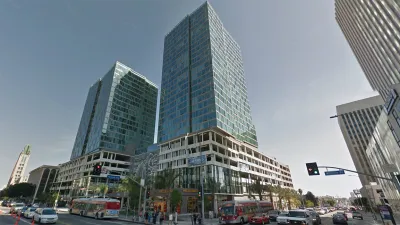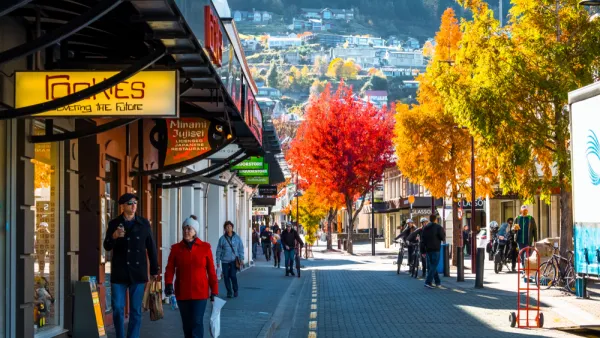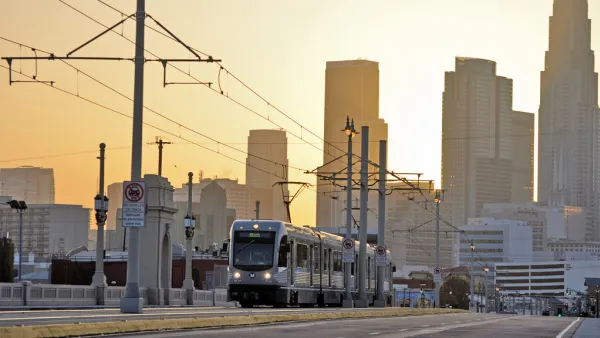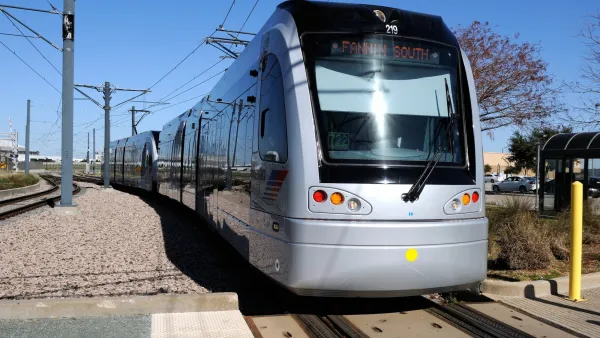Thom Mayne proposes a radical solution to Los Angeles' affordability/preservation problem: build up transit-friendly areas far beyond current densities, and leave the rest unchanged.

Long touted as a city of reinvention, Los Angeles faces some serious challenges putting that reputation to the test. Architect Thom Mayne asks, "How can we absorb an additional 1.5 million people while accounting for the impacts of climate change, advancing environmental sustainability (100% local water, 100% renewable energy, and enhanced ecosystem and human health) and urban affordability without completely destroying the character that Angelenos love about their city?"
His answer? "By adding 1 million more people along the Wilshire Boulevard corridor (which already has a half million people, for a total 1.5 million) and another half million in other transit-oriented areas." Meanwhile, anti-development Angelenos could continue their low-rise lifestyle everywhere else.
In the near-term at least, this project sounds politically unfeasible. But Mayne is thinking big: "In fact, using Hong Kong's residential building types, [the Wilshire corridor] could accommodate another 8 million people. In our relatively conservative model, the density of the Wilshire corridor would be less than that of Manhattan."
This vision is a tale of two cities: transit-oriented high-rise LA and auto-friendly suburban LA. In a more modest fashion, the city may already be heading in that direction. Mayne's plan fully embraces that future. From the article: "The strategy also diminishes water demand from single-family lawns, reduces vehicular emissions associated with sprawl, and protects an area 10 times its size —150,000 acres — that would have to be developed to meet housing demand at L.A.'s current densities. By building upward instead of outward, the corridor could easily create 70% more public open space for stormwater capture, habitat, and heat diffusion."
FULL STORY: Adding 1 million people along the Wilshire corridor could help L.A. create a sustainable city

Analysis: Cybertruck Fatality Rate Far Exceeds That of Ford Pinto
The Tesla Cybertruck was recalled seven times last year.

National Parks Layoffs Will Cause Communities to Lose Billions
Thousands of essential park workers were laid off this week, just before the busy spring break season.

Retro-silient?: America’s First “Eco-burb,” The Woodlands Turns 50
A master-planned community north of Houston offers lessons on green infrastructure and resilient design, but falls short of its founder’s lofty affordability and walkability goals.

Test News Post 1
This is a summary

Analysis: Cybertruck Fatality Rate Far Exceeds That of Ford Pinto
The Tesla Cybertruck was recalled seven times last year.

Test News Headline 46
Test for the image on the front page.
Urban Design for Planners 1: Software Tools
This six-course series explores essential urban design concepts using open source software and equips planners with the tools they need to participate fully in the urban design process.
Planning for Universal Design
Learn the tools for implementing Universal Design in planning regulations.
EMC Planning Group, Inc.
Planetizen
Planetizen
Mpact (formerly Rail~Volution)
Great Falls Development Authority, Inc.
HUDs Office of Policy Development and Research
NYU Wagner Graduate School of Public Service




























